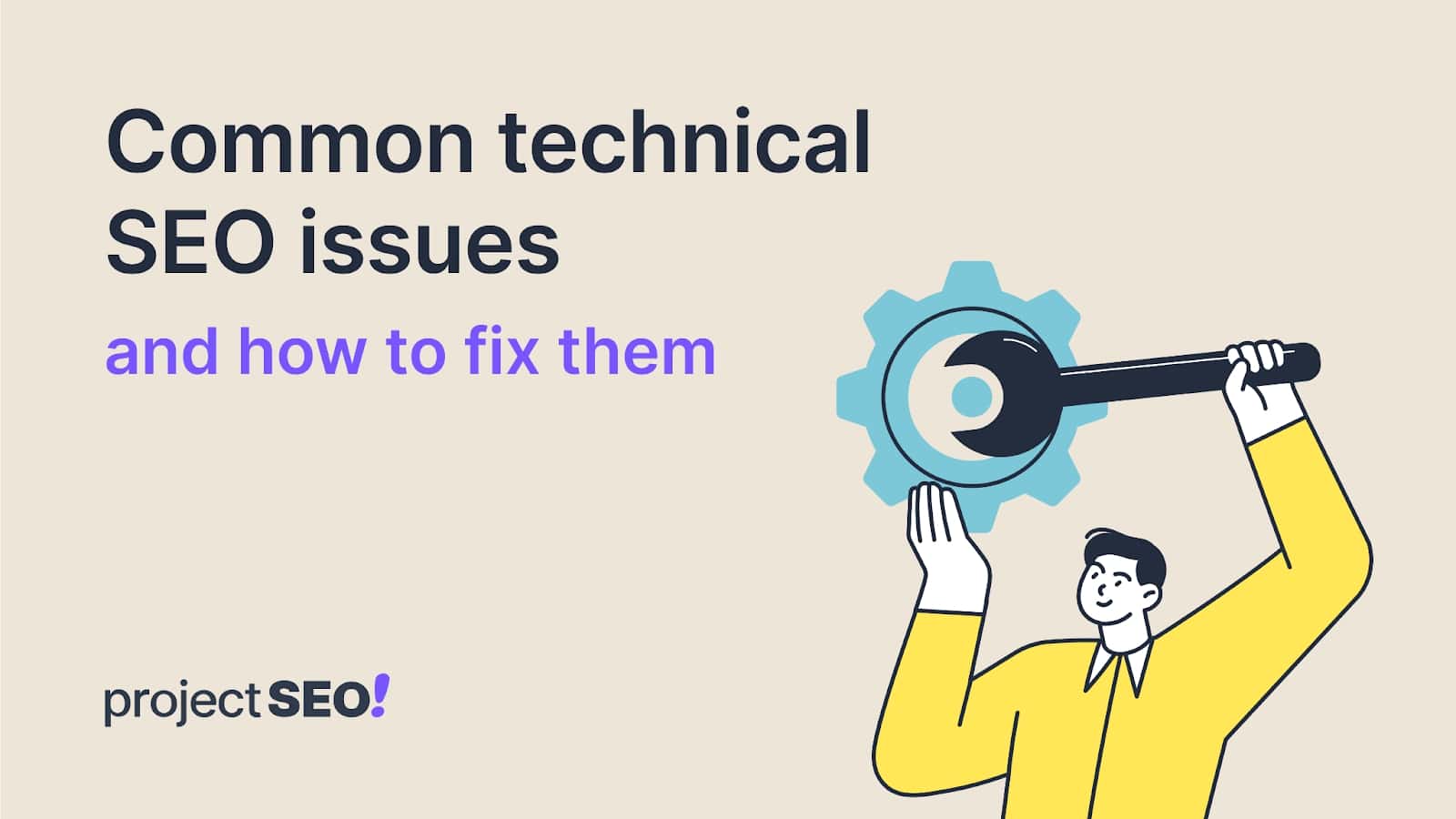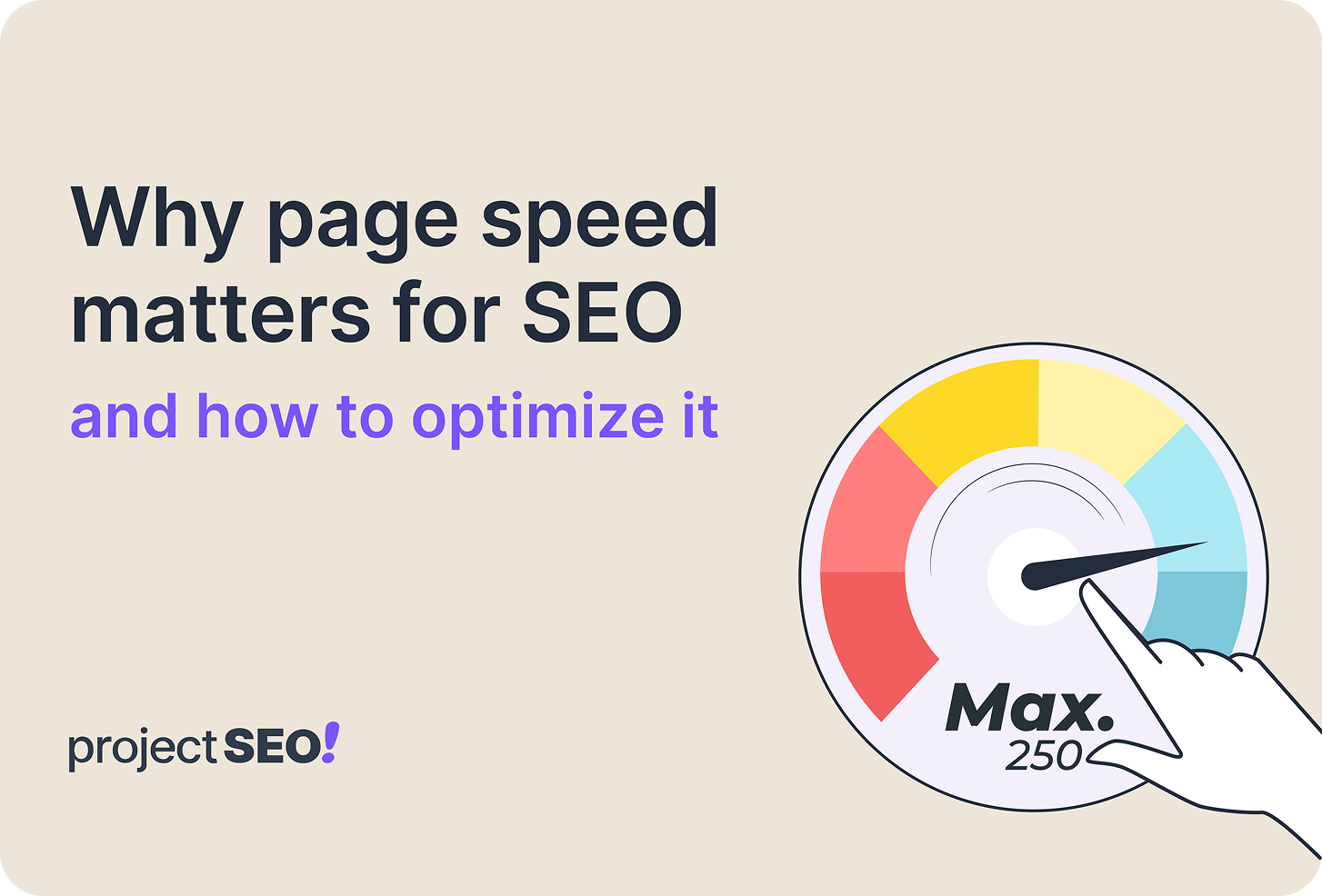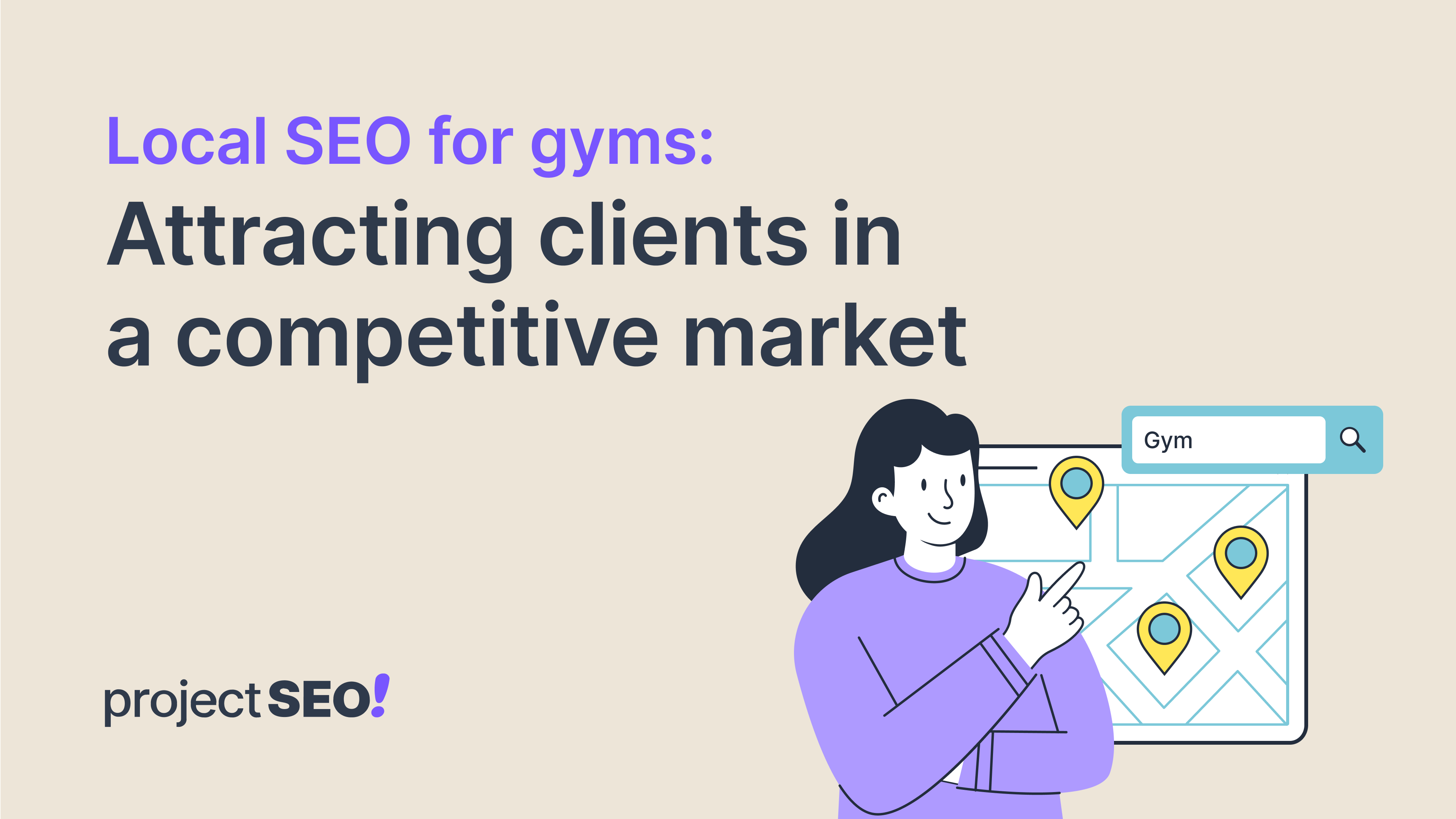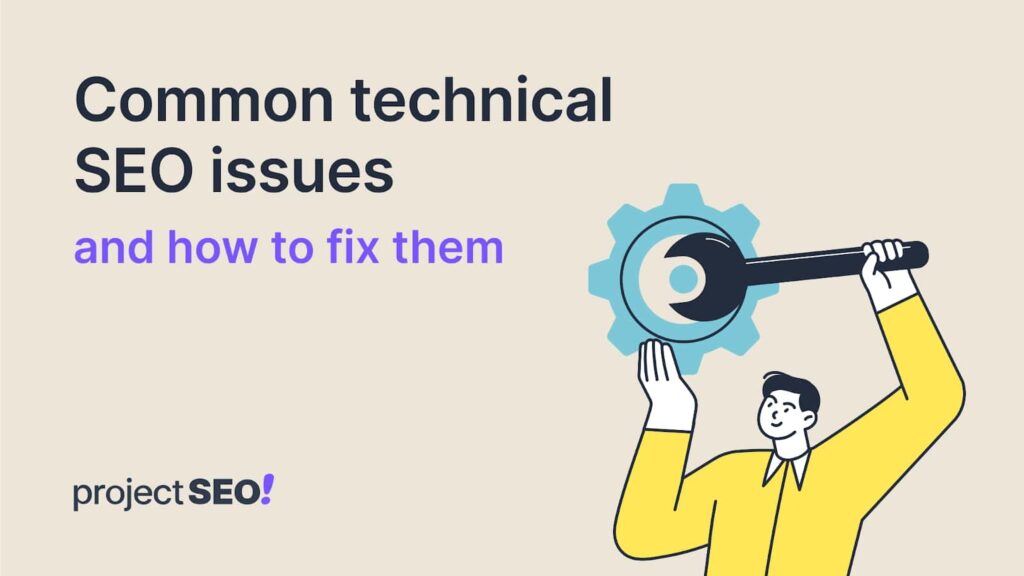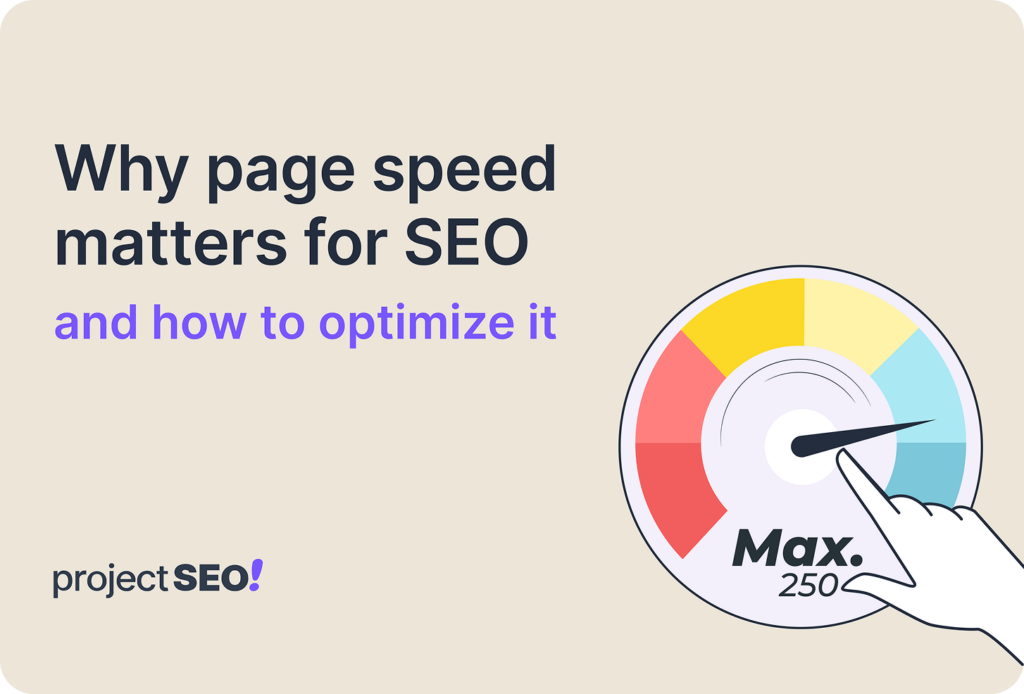To grow your gym, you need to reach clients in your local area. Local SEO is crucial for showing your gym to people searching for nearby fitness services.
SEO (Search Engine Optimization) uses keywords and other tactics to get your gym website on search engine results pages (SERPs). When web users search for “gyms near me” or “personal trainers,” SEO helps your gym rank higher and get organic traffic from those interested in fitness.
SEO for Gyms: What is it all About?
According to Google, 76% of people who search for something nearby on mobile visit a business within a day. So gym owners can employ local SEO services to connect with potential clients when they look for fitness options online.
But remember, not everyone who is searching for a fitness center enrolls immediately. Some are looking to educate themselves first before going practical. Providing educational content that answers their gym questions can make you stand out as a thought leader and position you as the best option should they decide to visit any gym house.
When people search locally, Google shows two main types of results: organic listings on the main page and the local map pack at the top, which shows nearby gyms along with their contact info and reviews. Being visible in both sections gets you more new clients
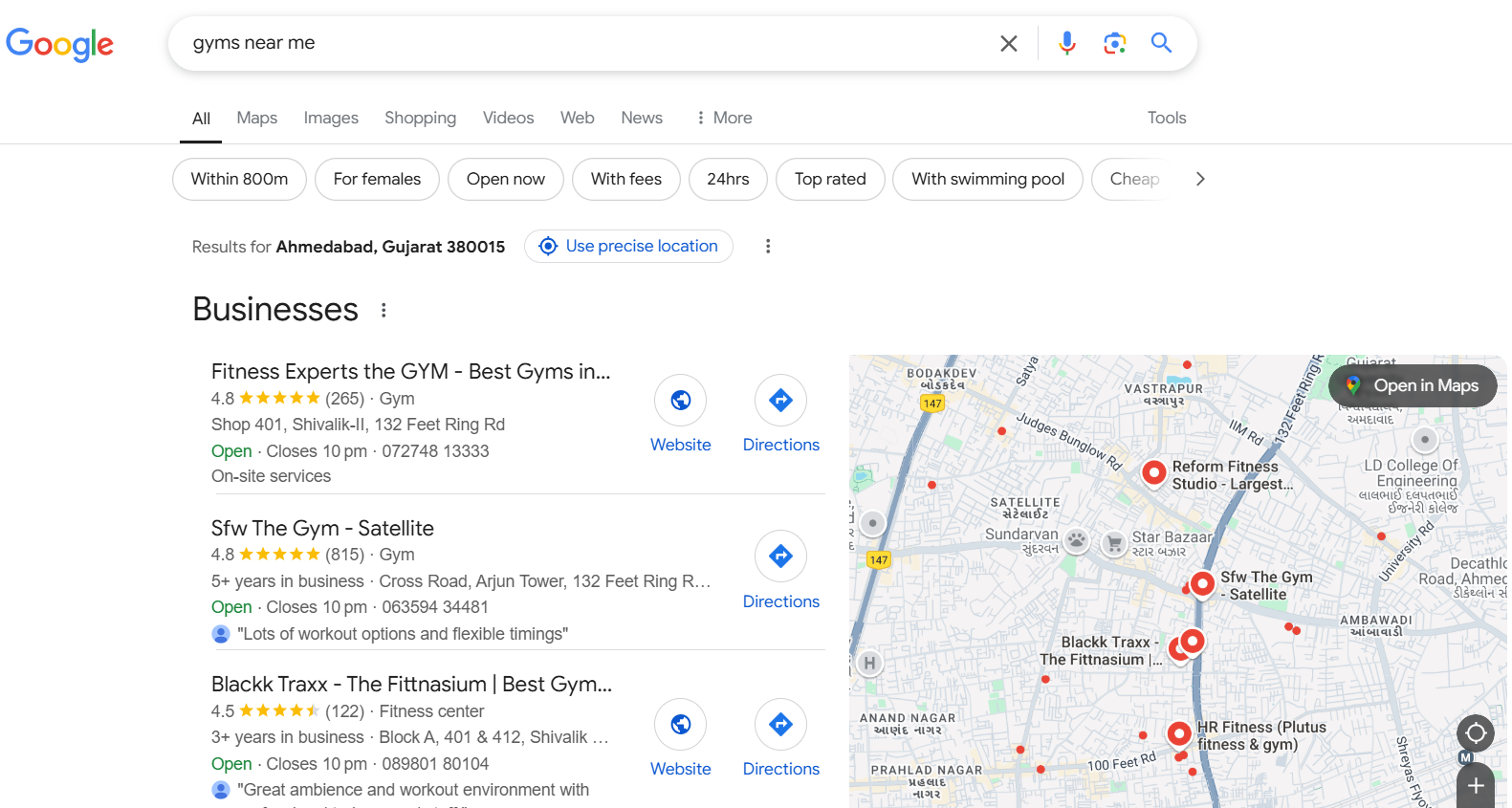
NOTE: General SEO targets broad searches like “benefits of exercise” and reaches a wider audience, while local SEO focuses on location-specific keywords like “gym near me” or “fitness studio in [Your City],” which are essential for attracting local clients.
Local SEO for Gyms: How to Get Started
1. Set up and Optimize Your Google Business Profile
Google Business Profile gets your gym on Google Maps and local search results. Customers are 70% likelier to visit and 50% likelier to buy from businesses with a complete Business Profile, according to Google.
Fill out your profile with your gym’s location, hours, services, and photos so clients get a good first impression and you rank higher in local searches.
2. Keep Your NAP Consistent and Accurate
Consistent Name, Address, and Phone (NAP) across the web makes your gym more trustworthy to search engines. Include specific services like “yoga classes” or “personal training” so people can find exactly what you offer.
3. Get Reviews and Engage With Them
It’s always a good idea to allow both positive and negative reviews. Positive reviews build trust, attract new clients, and improve your reputation. Negative reviews show you’re honest and can actually build trust with clients who appreciate transparency.
Replying to reviews shows that you value feedback and care about client experiences, which makes your gym more appealing.
4. Get Local Citations
List your gym on sites like Yelp, Yellow Pages, and fitness directories. Search engines use local citations to verify the accuracy of your business information and to determine your business’s relevance and authority in the local community.
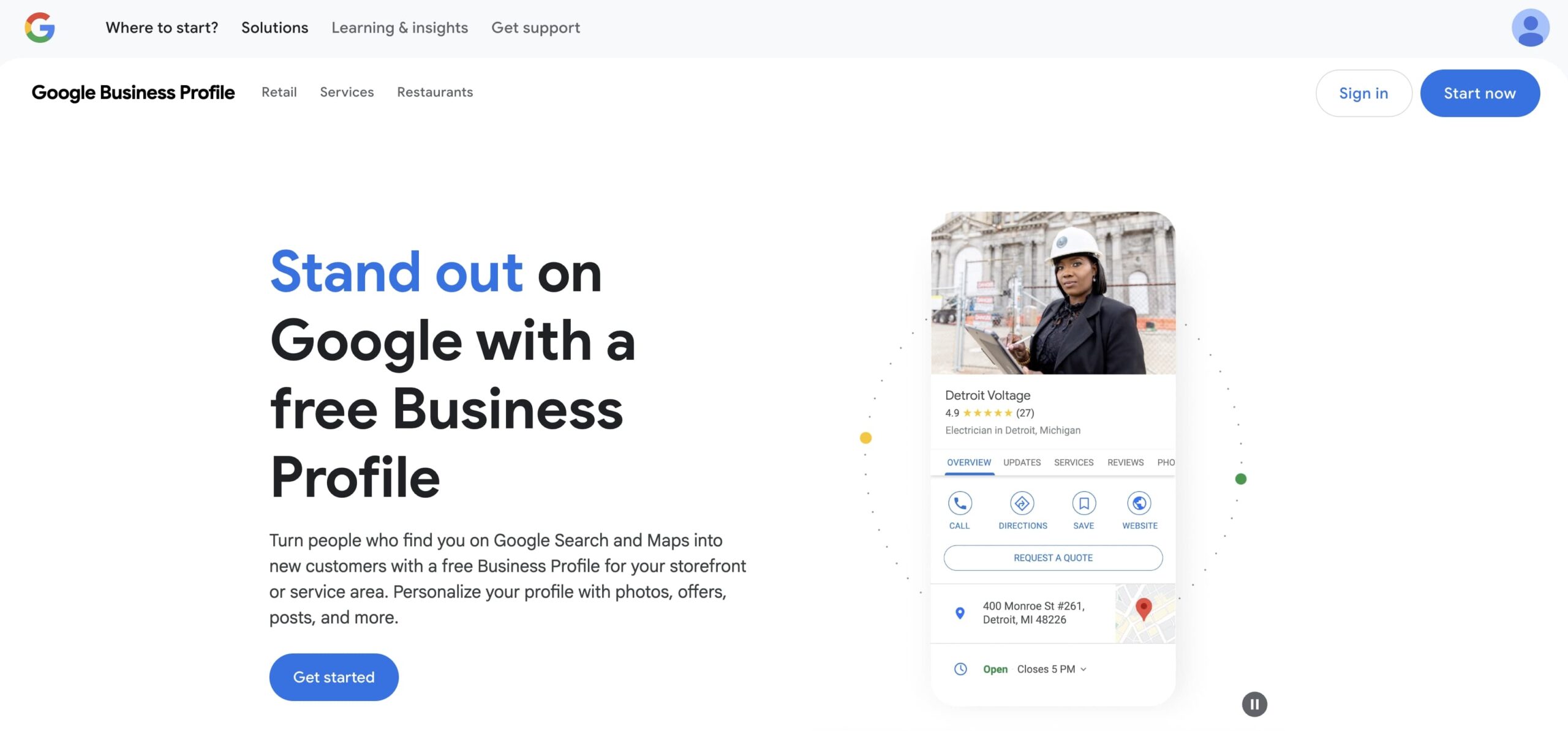
Keyword Research for Gyms
People won’t just type “gym houses” into Google when they need one. Some will search for things like “yoga classes” or “personal trainer,” while others search for answers like “How much does gym registration cost?” or “gym workouts for calf muscles.”
If you’re not showing up for these searches, you’re missing out on new clients. So, how do you make the most of these ranking opportunities?
You need to focus on two types of keywords: local keywords (to help people in your area find you) and educational keywords (to show your knowledge). Satisfy both, and you’ll get more traffic and convert searchers into clients.
For example, local keywords like “workout classes near me” get nearby people to find your gym, while educational keywords like “What age is best to start working out?” show that you can answer common fitness questions. Covering both gives you a better chance to attract a mix of local and knowledge-seeking visitors.
Here’s how to get started with keyword research:
- Use keyword research tools like Google Keyword Planner, Ahrefs’ Keyword Explorer, and Moz to find related keywords.
- Check competitors. Look at which keywords other gyms rank for, and identify those you can also target.
- Enter a few industry-related seed keywords. Examples are gym, workout, fitness, bodybuilding, weights, and personal training.
- Choose a keyword ideas report. Example: “Matching terms” shows all ideas that include your main keywords.
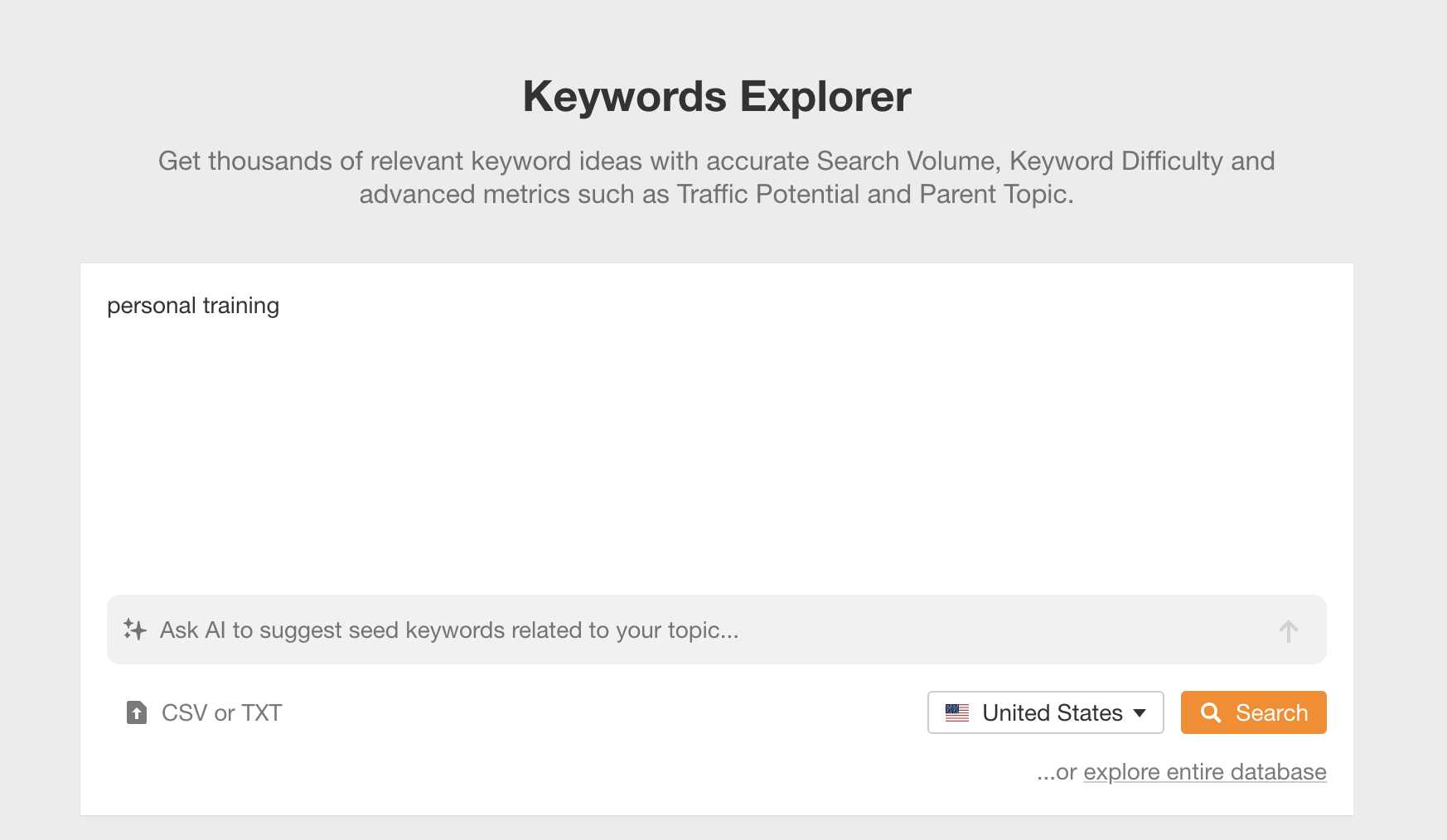
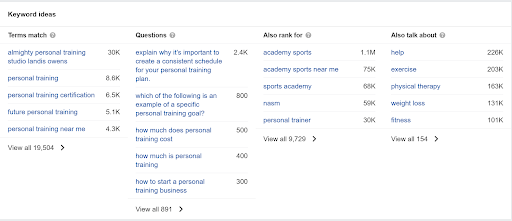

Content Marketing for Gyms
While you need keyword research to find out what people are searching for, what’s more important is to nail your content creation. That’s the only way to make the most of your keyword research.
Landing Pages
A landing page for each service is a great way to improve SEO and attract the right clients. Each page can be for a different service, like Yoga classes, personal training, or gym passes, with details that make it easy for people to find exactly what they’re looking for. These pages should use keywords related to the service and have information about benefits, pricing, and special offers.
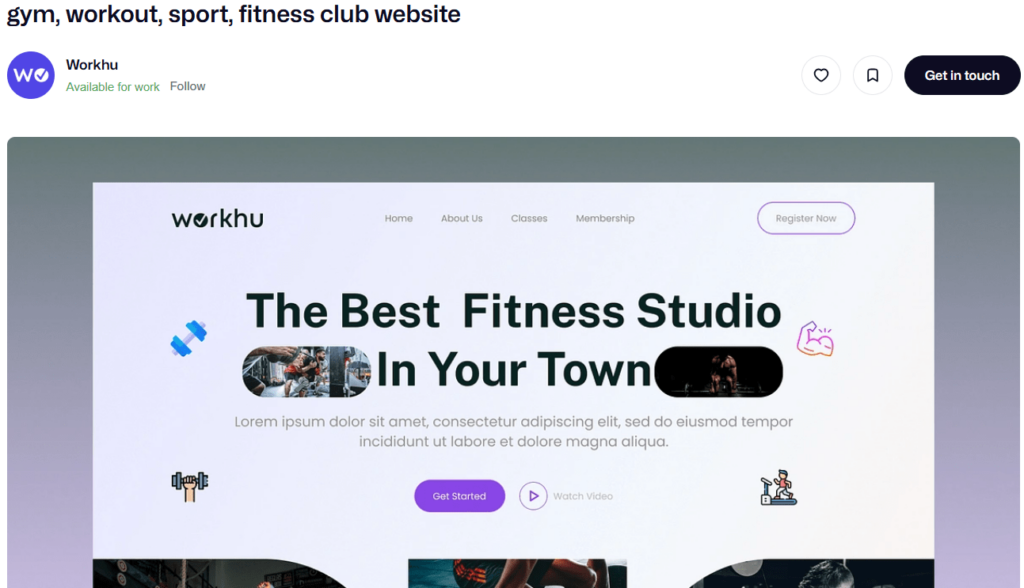
Blog Posts
A gym blog has fitness tips, workout guides, or stories from clients who have achieved results. These posts can target specific keywords people are searching for and help your gym show in search results. Creating pages that directly answer these questions builds trust and gets more visitors to your site
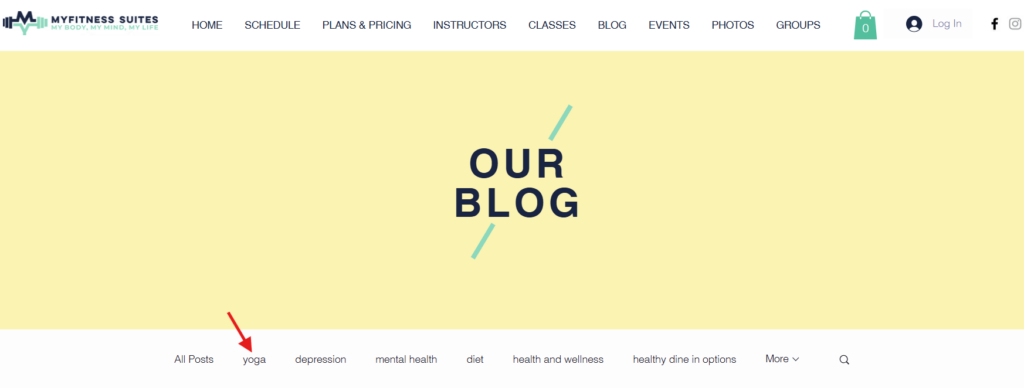
Videos
Video content is also great for the gym niche since it’s practical. Short workout demos, gym tours, or trainer introductions can engage people on platforms like YouTube, Instagram, or TikTok. Videos make it easier for potential clients to see what your gym offers and feel more comfortable visiting in person.
Frequently Asked Questions
Another good addition is the Frequently Asked Questions (FAQ) section. Many people have common questions about gym memberships, classes, and pricing. By answering these questions on your website, you can welcome more visitors, keep them on your site longer, and improve your search ranking. This combination of blog posts, videos, and FAQs creates a helpful content strategy that improves SEO and client engagement.
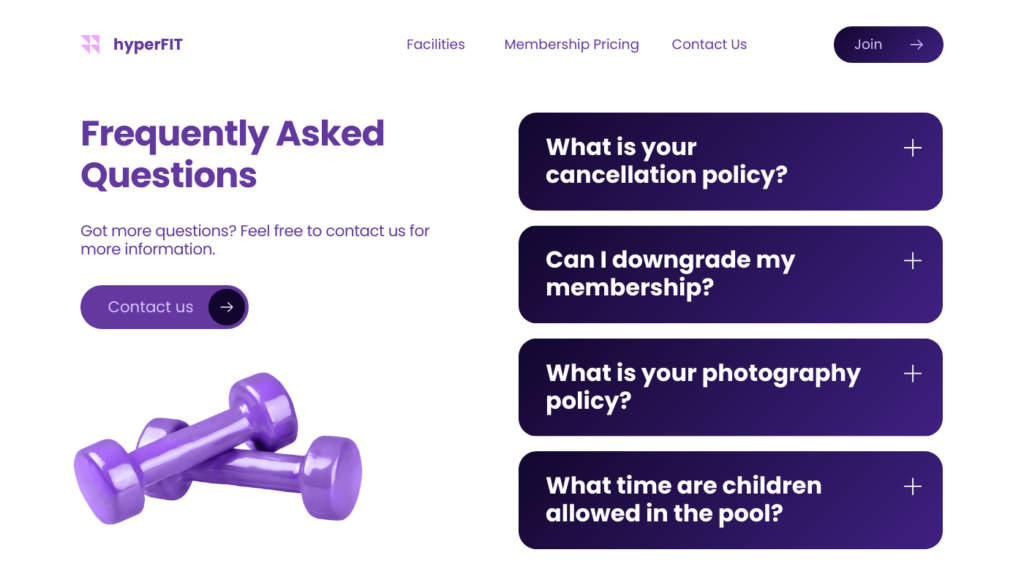
On-Page SEO for Gym Websites
Optimize your website’s on-page elements to rank higher by attending to the following:
- User-friendly design: Make sure your site is easy to navigate. People should be able to find information about classes, membership options, and contact details quickly.
- Image alt text: Use descriptive text for all images to make them accessible and searchable.
- URL structure: Use short, clear, keyword-rich URLs with lowercase letters and dashes and reflect page hierarchy.
- Title tags: Limit to 50-60 characters with main keywords.
- Meta descriptions: Limit to 160 characters and include a call to action like “Get Started today!”
- H1 headings: Keep the H1 heading clear under 65 characters and include main keywords for Google recognition. For example, a yoga class page might use “Yoga Classes in [City].”
Backlinks for Gyms
Backlinks are clickable links from other websites that link to your gym’s site. These links are valuable because they help improve your website’s position in Google search results. The more high-quality sites that link back to you, the more authority your site has in the eyes of search engines.
It’s not always easy to rank for popular keywords like “local gym” or “best fitness center.” To compete for these high-difficulty keywords, you need strong backlinks from reputable sites – ideally, links that appear on the first page of search results. This can be tough but doable with a good strategy.
Check out the top-ranking pages for your target keywords. See where those pages get their backlinks and try to get similar links for your site. Emulating successful strategies from your competitors will help you build up your own backlink profile and increase your gym’s search visibility.
Let’s Put Your Gym on the Map!
The importance of local SEO for gyms and trainers looking to attract nearby clients can not be overemphasized. Your Google Business Profile needs to be properly set up and optimized to show up in local search results.
Want to get more members to your gym? Contact ProjectSEO today to improve your online presence!
